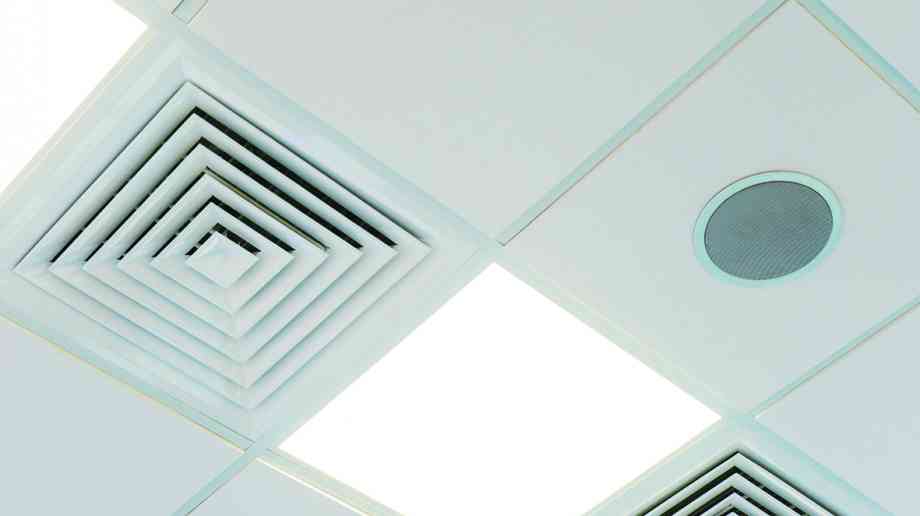
Improving air quality inside and outside school
With mounting evidence linking poor air quality – both indoors and outdoors – to poor respiratory problems in children, we look at what schools can do to tackle the problem
A joint report by Royal College of Paediatrics and Child Health (RCPCH) and the Royal College of Physicians has highlighted increasing evidence linking indoor air pollution and respiratory problems in children.
The report, ‘The Inside Story: Health effects of indoor air quality on children and young people’, presents evidence linking indoor air pollution to a range of childhood health problems including asthma, wheezing, conjunctivitis, dermatitis and eczema. It examined the air in homes and in schools; the places where children spend most of their time.
The indoor air, and the pollutants present, are the result of a complex set of factors. The air quality changes from building to building, place to place, over time, and in response to the activities taking place indoors. The main way people are exposed is by inhaling pollutants, but they can also be ingested or absorbed through the skin.
Materials used to construct and decorate buildings are long-term sources of ‘VOCs’ (air-borne chemical compounds) and formaldehyde, and as buildings are becoming more airtight to improve energy efficiency, improved insulation must allow for adequate ventilation to prevent pollutants building up.
The occupants of a building also affect its air quality by the activities they undertake. Cooking can create small particles, gases, and VOCs. Products we use for cleaning and cosmetics also release VOCs into the air. Showering after school sport activities can cause moisture and can lead to damp or mould.
Jonathan Grigg, Paediatric Respiratory Consultant from the RCPCH, said: “We’re finally paying attention to the quality of our outdoor air and this is long overdue. It’s harder to get population level data on the quality of indoor air but the evidence in this report paints a worrying picture. Children in the UK spend most of their time indoors, with just 68 minutes spent outside on an average day. Too many of our homes and schools are damp and poorly ventilated – this is adversely affecting the health of children.”
Stephen Holgate, special advisor for the Royal College of Physicians said: “Poorer households have fewer choices about where to live and where to go to school. More than three million families live in poor quality housing in the UK. Most will not have enough money to make improvements and have no option but to make do with damp, under-ventilated environments. We need to offer support at local authority level – likewise with schools. If we ask our children to spend their childhood days in unhealthy spaces, then we’re storing up problems for future health.”
What should schools do?
The report recommends that schools should use adequate ventilation to prevent the build-up of harmful indoor pollutants, ventilating between classes if outdoor noise causes a problem during lessons. If the school is located close to traffic, it may be best to do this during off-peak periods, or open windows and vents away from the road.
Ensure classrooms are regularly cleaned to reduce dust, and that damp or mould is removed. Repairs may be needed to prevent further damp and mould.
Ensure that any air filtering or cleaning devices are regularly maintained.
Finally, schools can work with the local authority, through ambient air quality action plans, and with parents or carers to reduce traffic and idling vehicles close to the school.
Pollution from roads
A new University of Surrey study has found that simply planting a hedge in front of a park can halve the amount of traffic pollution that reaches children as they play.
The study gives evidence on the positive impact that planting hedges and other forms of green infrastructure along busy roadsides will have on schools.
Experts from Surrey’s Global Centre for Clean Air Research (GCARE) conducted a five-month continuous experiment, measuring traffic pollutants with the use of emerging pollution sensing technology behind and in front of a hedge that shielded a children’s park in Guildford. The aim of the study was to measure any discernible difference in pollution reduction during the vegetation cycle of a Beech hedge – from dormancy to green-up to maturity.
The results showed that a drop in pollution concentration levels behind the hedge was dominated by three factors – the weather, public holidays, and the stage of the hedge’s life cycle. The researchers reported reductions of more than 50 per cent of the particulate matter after the hedge’s green-up stage in late April. Experts believe that this could be because the density of the hedge or the stickiness of the leaves had a sizable impact on particle pollutants passing through it. However, the results also revealed smaller reductions for gaseous pollutants including carbon monoxide and nitrogen dioxide, and that wind direction had little impact on the concentration levels.
Professor Prashant Kumar, founding Director of GCARE at the University of Surrey, said: “We believe our study is the first to look at how a hedge affects the pollution from traffic – assessing the influence of the vegetation lifecycle, wind direction and other variables. The reduction in pollution after the green-up stage gives valuable information regarding where to install green infrastructure across our communities.
“This study has not only produced unique evidence and support for our advocacy to install hedges and other forms of green infrastructure (where appropriate) along busy roadsides to protect schools, playgrounds and pedestrians/cyclists from air pollution exposure; it has also provided a clear indication that evergreen species should be favoured for barriers against air pollution to exploit their year-round performance.”
Inner city issues
The Mayor of London has funded a scheme where detailed air quality audits were carried out in 50 schools across 23 London boroughs. The audits assessed the air quality in some of the capital’s worst polluted schools and made a series of recommendations to protect pupils. As part of the programme the Mayor issued a £1 million fund which provided each of the 50 audited schools with a £10,000 starter grant and enabled any of the other London schools located in areas exceeding legal air pollution limits to apply for green infrastructure funding.
Now five of London’s most polluted boroughs - Newham, Islington, Southwark, Westminster and Brent - have announced they will be extending the air quality audit programme to help cut pollution in their schools.
Newham council is extending air quality audits and the results will help target clean air initiatives which currently includes a ‘Healthy School Streets’ programme and ‘anti-idling’ campaigns.
Southwark Council intends to start air pollution audits in schools later this year. It is anticipated that all primary and secondary schools maintained by the council that are over the NO2 legal limit (based on 2016 modelled data) will be audited as well as every school in the Old Kent opportunity area. Private schools will have the opportunity to conduct an audit too making it 72 schools in total.
Westminster has committed to ensure every education establishment (with the age ranges of 5 to 18 years old) are provided an Air Quality Audit. They have also allocated £1m of funding over four years to help primary schools after they have completed an air quality audit and received the report. Local authority schools, free schools and academies can apply for up to £10,000 each, and private schools can apply for up to £5,000. The money can be spent on building and highway improvements outside school and green infrastructure.
Brent Council has since developed the ‘Breathe clean’ project, which has helped to raise awareness of poor air quality at most infant and primary schools in the borough, including an air quality presentation and NO2 diffusion tubes. A report will be published soon to find out where the air quality hotspots are so the council can take targeted audits and interventions at those schools.
Latest News
10/11/2025 - 10:27
New data from Tesco's Fruit & Veg for Schools programme shows that 94% of teachers reported improved behaviour from pupils taking part in the scheme, including sharper focus and more energy in the classroom.
07/11/2025 - 09:54
The Scottish Government has announced funding which will go to local councils for strategic approaches to closing the poverty-related attainment gap.
06/11/2025 - 09:42
Ofsted has shared findings from pilot inspections carried out in 115 schools this autumn, ahead of the full rollout of its renewed inspection framework.
06/11/2025 - 09:16
The TV, radio and multi media campaign deals with the root causes of absences and identifies ways to approach conversations about wellbeing that can help pupils to improve their attendance.
05/11/2025 - 09:49
The government will publish a new set of enrichment benchmarks, with schools asked to ensure every child has access to activities across five categories of enrichment.







